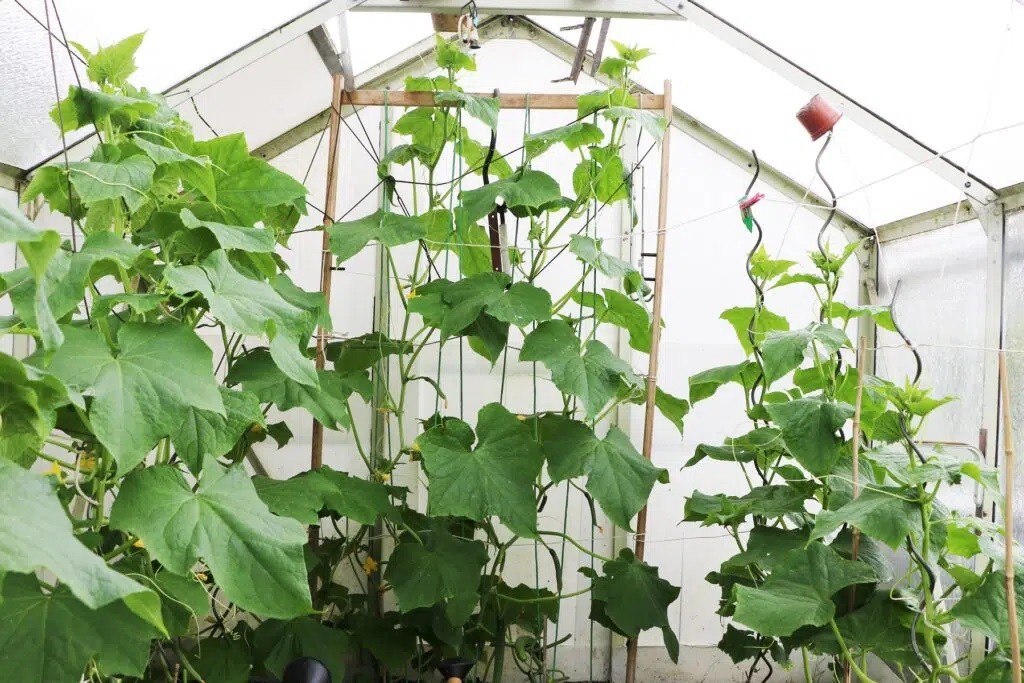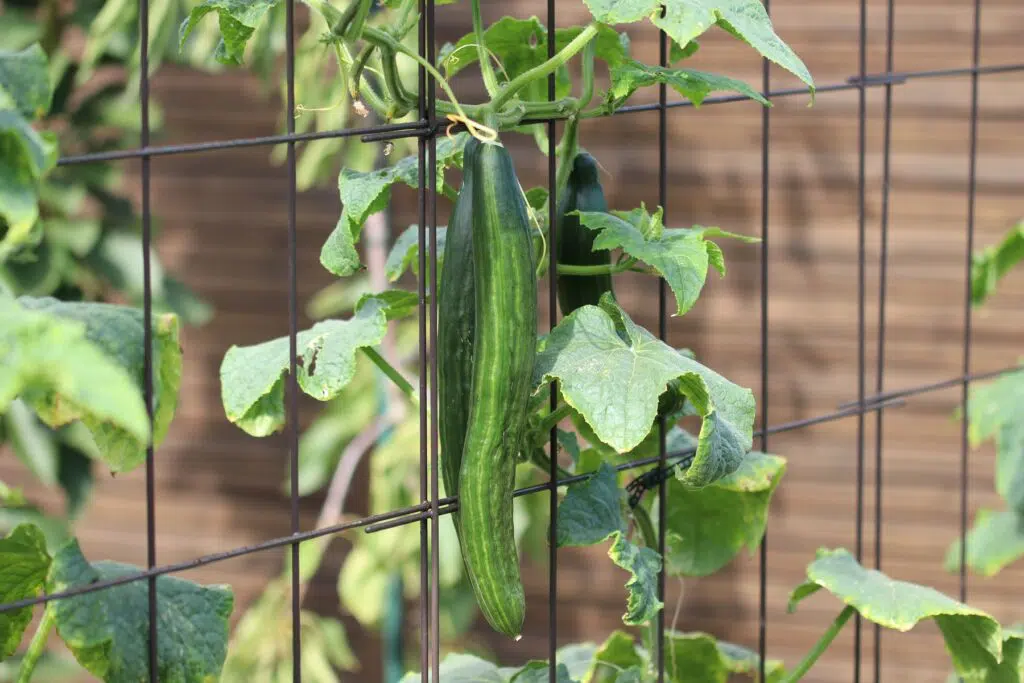Cucumbers turning yellow and falling off the plant can be due to several factors, and addressing these issues can help improve cucumber production. Here are common reasons for yellowing cucumbers and what you can do to prevent it:
Overripe Cucumbers: If cucumbers are left on the vine for too long, they can become overripe and turn yellow. Harvest cucumbers when they reach the desired size and color, typically green, to prevent them from turning yellow. Check the plants regularly and pick cucumbers as soon as they are ready.
Inadequate Pollination: Poor pollination can result in cucumbers that fail to develop properly and turn yellow. Bees are the primary pollinators of cucumber flowers. To improve pollination, encourage pollinator-friendly plants in your garden and avoid the use of pesticides that may harm bees. You can also hand-pollinate cucumber flowers by transferring pollen from male to female flowers using a small brush or cotton swab.
Watering Issues: Irregular or inadequate watering can stress cucumber plants, leading to fruit problems. Ensure that your cucumber plants receive consistent moisture. Keep the soil consistently moist but not waterlogged. Mulching can help retain soil moisture and prevent fluctuations in soil moisture levels.
Nutrient Imbalance: Cucumbers require proper nutrients to develop healthy fruit. Ensure that your soil has adequate levels of essential nutrients, particularly nitrogen, phosphorus, and potassium. You can use balanced fertilizers formulated for vegetables or conduct a soil test to determine any nutrient deficiencies and adjust accordingly.
Disease and Pest Infestation: Diseases and pests can damage cucumber plants and their fruit, leading to yellowing and premature dropping. Monitor your plants for signs of pests and diseases, such as cucumber beetles, aphids, or powdery mildew. Use appropriate pest control methods, like insecticidal soap for pests and fungicides for fungal diseases, and take steps to prevent infestations through good garden hygiene and crop rotation.
Plant Crowding: Overcrowding of cucumber plants can lead to increased competition for resources, inadequate air circulation, and disease spread. Ensure that your cucumber plants have sufficient spacing between them to promote good air circulation and reduce disease risk.
Weather Conditions: Extreme temperatures, such as excessively hot or cold weather, can stress cucumber plants and affect fruit development. Providing shade during extreme heat or using row covers to protect against cold can help mitigate these issues.
By addressing these factors, you can reduce the likelihood of cucumbers turning yellow and falling off your plants. Regular monitoring, good gardening practices, and proper care will contribute to healthier cucumber production.
Tip: If a plant repeatedly produces diseased fruit, it is advisable to remove it completely and dispose of it.
Contents
Pests
Bugs
Bugs such as the green rice bug (Nezara viridula) or the marbled tree bug (Halyomorpha halys) are still relatively new in Europe. They also infest cucumbers, among other crops. Yellowish lightening or spots and deformations may occur on the fruit. Promising control in terms of environmental protection and nature conservation is currently not possible. However, in order to decimate the infestation, the animals can be picked off.
Thrips
Thrips can be particularly dangerous to greenhouse cucumbers. Both the leaves and the fruits turn yellow due to the sucking activity of the pests. The flowers are also infested. Heavy infestation leads to growth retardation and fruit shedding. Beneficial insects such as the predatory bug (Orius laevigatus) and the predatory mite (Amblyseius cucumeris) can be used for control. Glue boards can be used to monitor infestations for early detection and control.
Preventive measures
In order to avoid harvest losses due to yellowing and death of the fruit, a number of preventive measures can be taken during the entire cultivation period.

- ensure good soil conditions before starting cultivation
- ensure regular balanced supply of nutrients
- water sufficiently, avoid wet leaves
- observe crop rotation and crop rotation
- plant only every four years in the same place
- do not plant outdoors before mid-May
- protect from cold at the beginning
- mitigate intense sunlight by shading
- ensure constant high humidity and air circulation
- reduce the number of fruit set early on
- strengthen plants with plant liquid manure
Frequently asked questions
Are yellow discolored cucumbers still edible or poisonous?
Completely yellow discolored cucumbers are not poisonous, but due to the change in taste are unsuitable for consumption. The exception, of course, are special yellow cucumber varieties.
When are cucumbers overripe?
Once the first spots turn yellow and the ends are softer than the middle part, they are overripe. At this point, they are usually still edible, but have lost quality.


